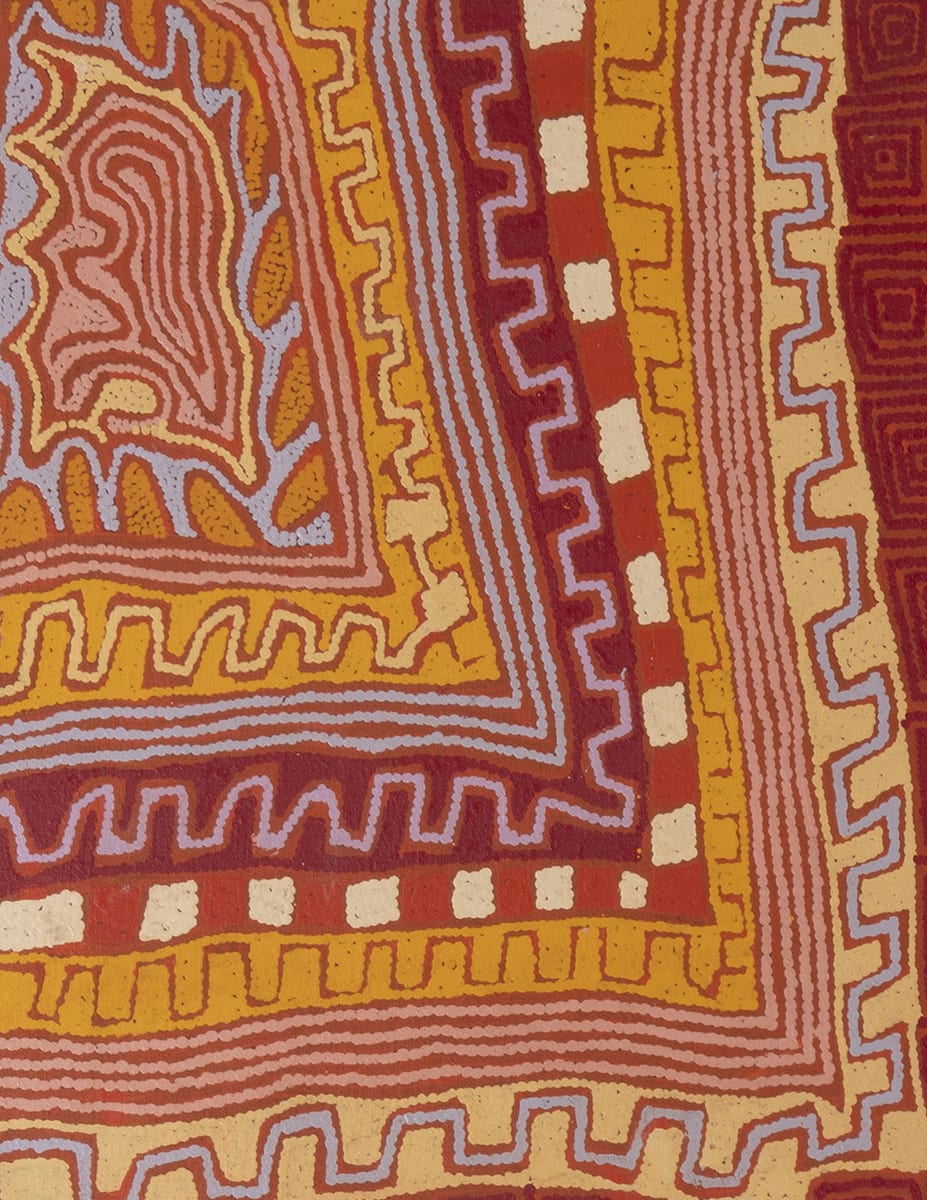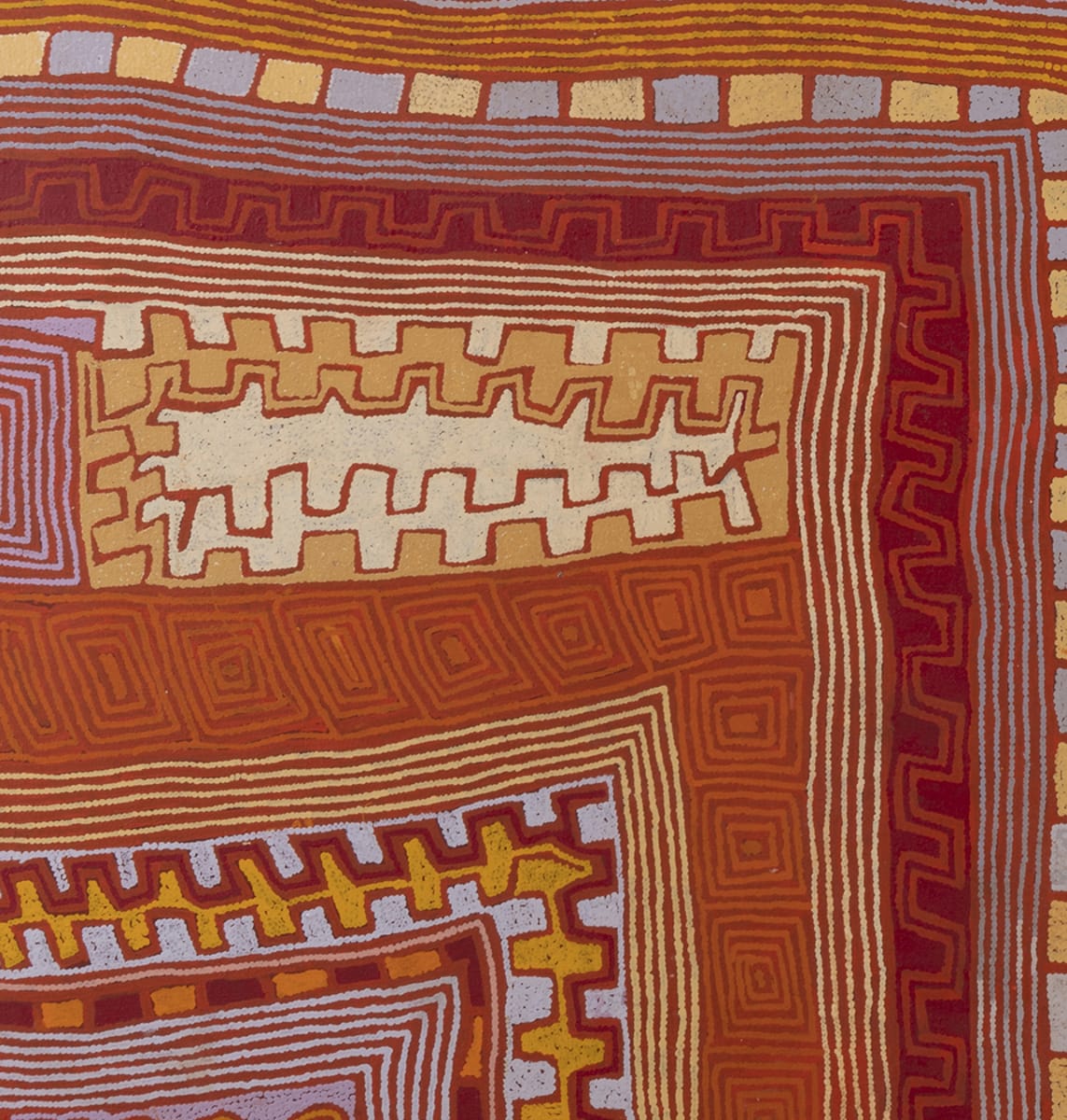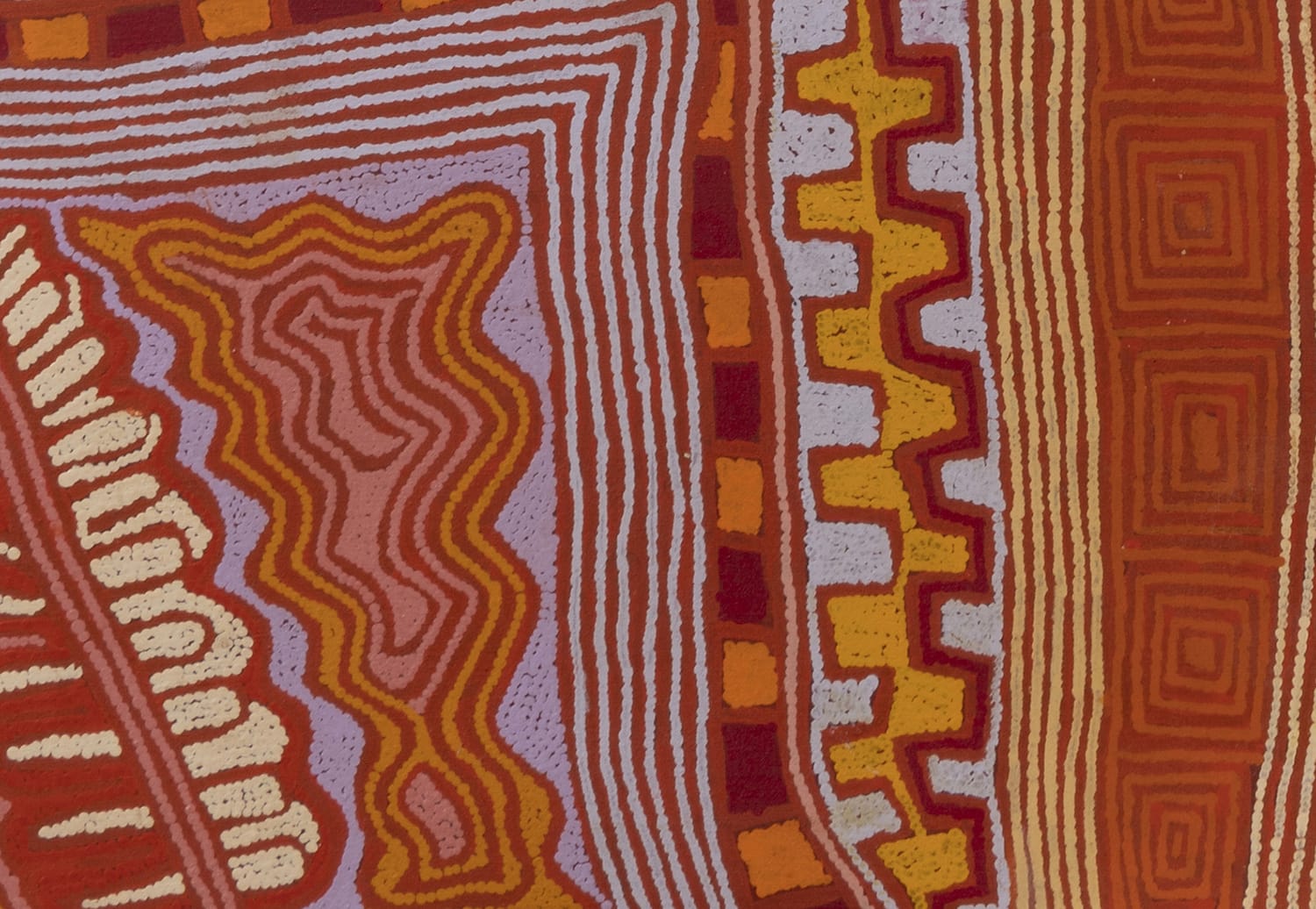-
Artworks
Open a larger version of the following image in a popup:
(detail) Patrick Tjungurrayi, Wagutu & Kuningka Dreaming at the Site of Ngarru, 2007
Photo: Courtesy of D’Lan Contemporary
Open a larger version of the following image in a popup:
(detail) Patrick Tjungurrayi, Wagutu & Kuningka Dreaming at the Site of Ngarru, 2007
Photo: Courtesy of D’Lan Contemporary
Open a larger version of the following image in a popup:
(detail) Patrick Tjungurrayi, Wagutu & Kuningka Dreaming at the Site of Ngarru, 2007
Photo: Courtesy of D’Lan Contemporary
Open a larger version of the following image in a popup:
(detail) Patrick Tjungurrayi, Wagutu & Kuningka Dreaming at the Site of Ngarru, 2007
Photo: Courtesy of D’Lan Contemporary
Patrick Tjungurrayi Pintupi language, circa 1935-2017
Wagutu & Kuningka Dreaming at the Site of Ngarru, 2007Synthetic polymer paint on linen96 x 72 inches (244 x 183 cm)Photo: Courtesy of D’Lan ContemporaryFurther images
Provenance
The Artist, painted at Kiwirrkurra, Western Australia
Papunya Tula Artists, Alice Springs, Northern Territory, cat. no. PT0711198
Gabrielle Pizzi, Melbourne
Private Collection, Melbourne, acquired from the above in 2008
D’Lan Contemporary, Melbourne
Collection of Steve Martin & Anne Stringfield, New York
Exhibitions
Significant: 10th Anniversary, D'Lan Contemporary, Melbourne, 7 May – 3 July 2025Literature
John Carty (ed.), Patrick Tjungurrayi: Beyond Borders, UWA Publishing, Western Australia, 2021, p. 15 (illus.)
Vanessa Merlino, Luke Scholes, and Isabella Wadley, Significant: 10th Anniversary, D'Lan Contemporary, Melbourne, 2025, p. 158 (illus.)
Patrick Tjungurrayi forged one of the most dynamic careers of all desert artists. He was one of the pioneering Balgo painters in the late 1970s and early 1980s, before returning to his home Country near Kiwirrkurra in the 1990s, where he painted for Papunya Tula Artists. He moved between Balgo and Kiwirrkurra over the ensuing decades, exploring different styles in both places, and ultimately a new artistic vision born between them. The Tingarri ancestors are a cornerstone of artistic subject matter and aesthetics for Western Desert men, and for Patrick in particular. Their ancestral journeys across the desert can crystallise as the iconic circle–line itineraries synonymous with desert art, or as mazes, concentric squares, or combinations of these and other designs. In Patrick’s paintings these narratives are commonly anchored by squared designs streaming across the Country. Often the squares are filled in as contrasting blocks of colour: one colour being the Tingarri men, the other colour being the young initiates who follow them. Colour is structure in Patrick’s Country; it differentiates the elements and meanings of the world. This conceptual hue in Patrick’s work was subtle throughout the 1990s, masked as it was in the sedate contrasts of Papunya Tula’s palette: yellow and white, red and brown, white and black. In 2000, Kiwirrkurra flooded and the whole community was evacuated. The rains that Patrick so regularly painted inundated the land on a mythic scale. He relocated his family back north to Balgo during this time, and that is when the colour flowed back into his work. There he played with the diverse palette available at Warlayirti Artists. The pinks, purples and blues that may once have unbalanced his works suddenly gave them depth and force, a kaleidoscopic light and shade. Patrick expanded these experiments into larger formats, pushing and stretching ambitious Tingarri compositions and a bolder palette into wider horizons. The success of these paintings pulled the Papunya Tula palette out to meet them. They also refocused the art world’s attention on his influential oeuvre, and in 2008 Patrick was awarded the $50,000 Western Australian Indigenous Art Award. An iconic work from this period, Wagutu & Kuningka Dreaming at the Site of Ngaru 2007 embodies not only the ambition of Patrick’s painting but the extraordinary life trajectories that underpin it: the heft of incomparable knowledge balanced at all corners of his compass by bold vignettes, dark humour, implacable authority. It is like a gallery of his greatest hits hung within another painting. Such work reveals an artist operating beyond the geographic, aesthetic and conceptual boundaries not only of his audience, but of most of his contemporaries too.
—John Carty, Significant: 10th Anniversary, D'Lan Contemporary exhibition catalogue, p. 158









